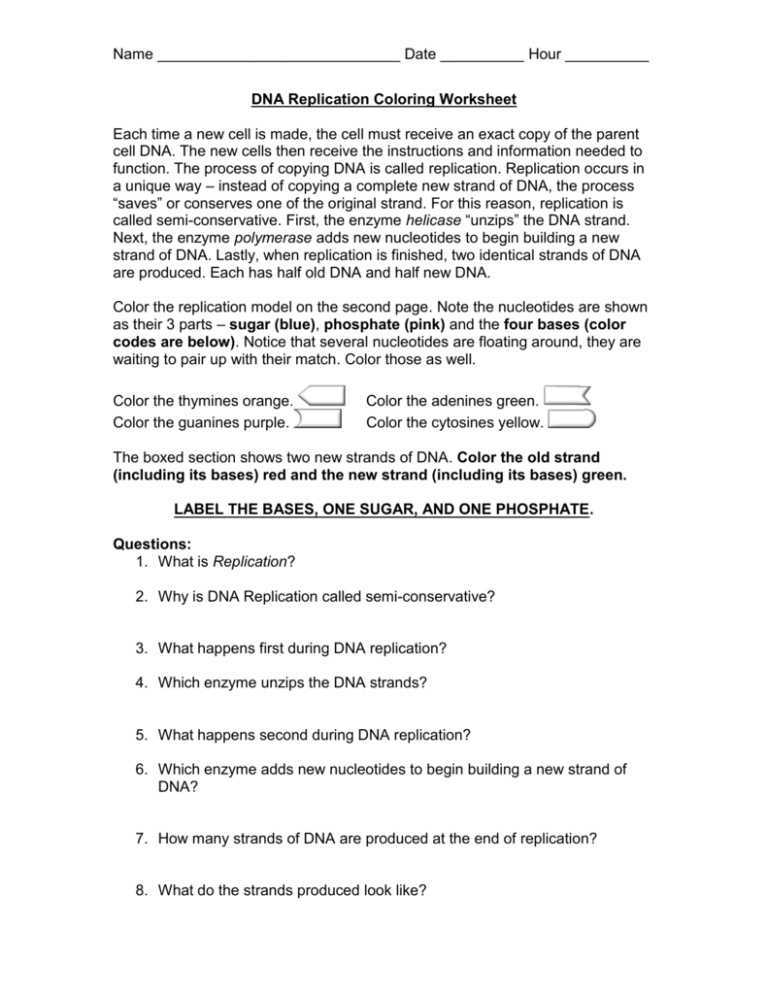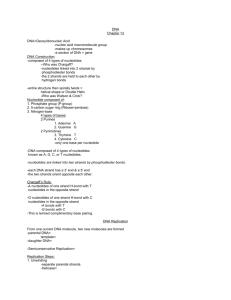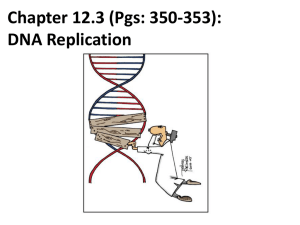DNA Replication Coloring Worksheet
advertisement

Name _____________________________ Date __________ Hour __________ DNA Replication Coloring Worksheet Each time a new cell is made, the cell must receive an exact copy of the parent cell DNA. The new cells then receive the instructions and information needed to function. The process of copying DNA is called replication. Replication occurs in a unique way – instead of copying a complete new strand of DNA, the process “saves” or conserves one of the original strand. For this reason, replication is called semi-conservative. First, the enzyme helicase “unzips” the DNA strand. Next, the enzyme polymerase adds new nucleotides to begin building a new strand of DNA. Lastly, when replication is finished, two identical strands of DNA are produced. Each has half old DNA and half new DNA. Color the replication model on the second page. Note the nucleotides are shown as their 3 parts – sugar (blue), phosphate (pink) and the four bases (color codes are below). Notice that several nucleotides are floating around, they are waiting to pair up with their match. Color those as well. Color the thymines orange. Color the guanines purple. Color the adenines green. Color the cytosines yellow. The boxed section shows two new strands of DNA. Color the old strand (including its bases) red and the new strand (including its bases) green. LABEL THE BASES, ONE SUGAR, AND ONE PHOSPHATE. Questions: 1. What is Replication? 2. Why is DNA Replication called semi-conservative? 3. What happens first during DNA replication? 4. Which enzyme unzips the DNA strands? 5. What happens second during DNA replication? 6. Which enzyme adds new nucleotides to begin building a new strand of DNA? 7. How many strands of DNA are produced at the end of replication? 8. What do the strands produced look like? Name _____________________________ Date __________ Hour __________ Name _____________________________ Date __________ Hour __________







